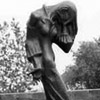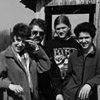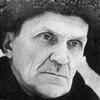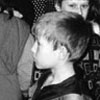Welcome
The Soviet Gulag was a massive system of forced labor camps. Throughout its history some 18 million passed through the prisons and camps of the Gulag. Under Stalin, labor camp prisoners became an important resource for the construction of many industries, including the nation's railways and roads, mining operations, and the timber industry. Millions suffered in the camps, many guilty of no crime.
In the eyes of the authorities, a prisoner had almost no value. An unknown number well into the millions died in Gulag camps. Those who died of hunger, cold, and hard labor were easily replaced by new prisoners.
Reflections

Are you a Gulag survivor, or a friend or relative of a Gulag victim? Did you visit the traveling exhibit? Please share your thoughts in Reflections.
About

The National Park Service, in a unique partnership with the Gulag Museum at Perm-36, the International Memorial Society, and Amnesty International USA, is presenting the first exhibition on the Soviet Gulag in the United States, “Gulag: Soviet Forced Labor Camps and the Struggle for Freedom.” Learn more about this partnership in the About section. To receive information about an upcoming website exhibit on the Gulag, Gulag: Many Days, Many Lives, please contact us.
Online Exhibit

Varlam Shalamov, Russian author who was imprisoned in the Gulag for over twenty years. Learn more about Shalamov in the Online Exhibit.
Teacher Resources

Harvard University’s National Resource Center for Russian, East European and Central Asian Studies (NRC) has developed a teacher curriculum unit that further explores the themes of the traveling exhibition. It is a three-day course intended for use amongst U.S. middle and high-school students. The unit, entitled, “GULAG: Soviet Prison Camps and Their Legacy,” includes chapters devoted to the creation and scope of the Gulag system, daily life in the camps, as well as the Gulag’s historical legacy. The curriculum includes first person accounts and artwork as well as class exercises and homework. If you are interested in receiving a curriculum unit, please contact the NRC at nrc@fas.harvard.edu, or feel free to download a PDF of the curriculum unit.



Upcoming Events
Learn more about the traveling exhibit schedule.